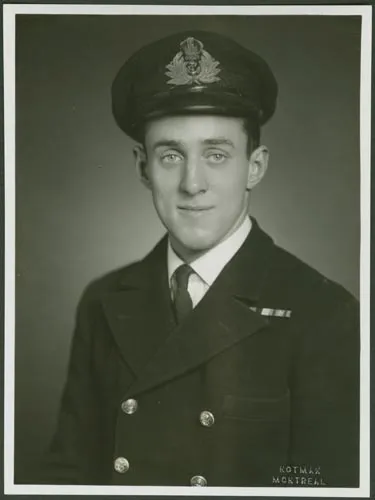768 Squadron, Fleet Air Arm, HMS Heron, RNAS Yeovilton
Grumman Wildcat V aircraft JV 356 lost when it spun into the sea while practicing deck landings from off HMS Ravager
Lt(A) HM Little (RCNVR) was missing, presumed killed. Lt(A) Little has no known grave and is commemorated on the Halifax Memorial (www.fleetairarmarchive.netwww.naval-history.net)
![]() Royal Canadian Naval Volunteer Reserve (RCNVR) Officers 1939-1945
Royal Canadian Naval Volunteer Reserve (RCNVR) Officers 1939-1945


